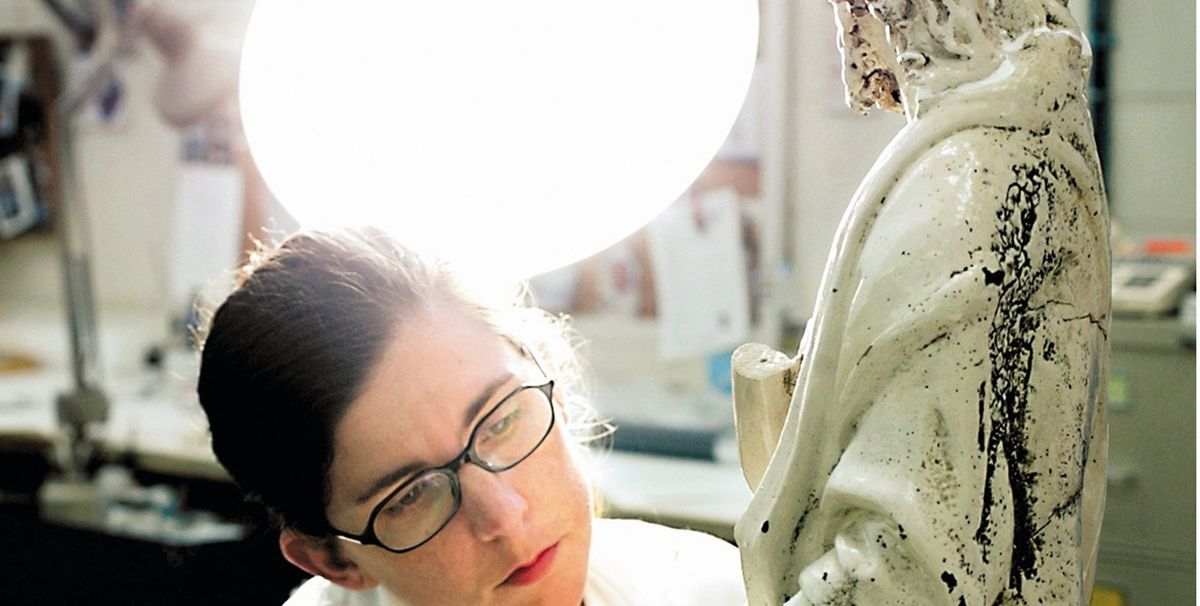Construction of the revamped $24m conservation centre at the Museum of Fine Arts, Boston is due to begin later this year. The museum plans to centralise six specialist areas of conservation by converting the top two floors of its four-storey, 1970s George Robert White wing into a 22,000 sq. ft, open-plan facility.
The new centre will have rooms for cross-departmental meetings and collaborative laboratories for paintings, objects, furniture and frame conservation (Asian art, paper and textile studios will remain where they are), as well as for scientific research, exhibition planning and mount-making. The design reflects a shift in the approach to conservation and how conservators work, says Matthew Siegal, the chair of conservation and collections management at the museum.
“It’s not just about treatment any more,” he says. “Our department has an equal amount of technicians and conservators. People responsible for conservation engineering, specialist collections care, preventative conservation, etc. The whole discipline has changed to look at everything that goes on prior to the actual treatment. The idea is to keep objects from needing treatment.”
Historically, the museum’s conservation labs grew around specific collections and curatorial departments. Essentially, space for conservation areas was colonised when needed. “That’s been the mindset as well,” Siegal says. “Everyone has their own equipment, their own space. We’re trying to get away from that. A lot of our work is collaborative, and not only among ourselves but with curators, educators, technicians and patrons. We currently do not have spaces that reflect the way we work. We’re fairly isolated at the moment.”
A change in art production methods is also driving the need for greater collaboration. Artists today are spoiled for choice when it comes to the superabundance of materials at their disposal: everything from car fenders to Crayola crayons are potential materials. With so many different media at their fingertips, it’s no surprise that many contemporary artists incorporate more than one in a single work. Siegal points out that separate disciplines within conservation do not serve mixed media works particularly well, as a single work may require the expertise of several conservators.
The pace of technological advances means it is unrealistic for every conservator to become an expert in all types of technology, Siegal adds. Instead of teaching each conservator how to use every bit of technology available, the museum is looking to train one or two people from across the various specialisms to develop specific expertise. The new centre’s design “anticipates the rush of technology we can expect to see in the future”, he says.
'Tremendously popular' on social media
Siegal has pushed to bring conservation out of the backroom and into the public areas. Visitors can watch conservation in action on a rotating basis at locations throughout the museum. For example, conservators in the Asian paintings gallery have been working on Death of Buddha, an 18th-century monumental depiction, for the past six months. The treatment is due to finish this month. Siegal hopes to carve out space within the new centre for educational programming that will be more interactive than the current gallery spaces, which often require barriers because of the chemicals used in the treatment process.
While he admits he was driven initially more by a desire to raise awareness about his profession than to engage with the public, he says these projects have proved to be “tremendously popular” with visitors. “I think it’s the most popular of the museum’s programming [initiatives] in terms of social media [responses].” So how does he explain the public’s interest in watching conservators at work? “People are used to seeing works at a distance—stuck on a wall or in a display case,” he says. “That distance falls away when you see them actively being worked on. It’s a completely different experience. Works are not static—they are dynamic, and are what they are today only because they have been acted upon over time.”
Conservation in action: MFA Boston studies its Kahlo
A recent technical examination of Frida Kahlo’s early painting Dos Mujeres (Salvadora y Herminia, 1928) reveals new information on the Mexican Modernist’s artistic process. X-rays and infrared reflectography show details in the underdrawing that were left out of the final composition.
“She essentially edited as she worked,” says Rhona MacBeth, a paintings conservator at the Museum of Fine Arts, Boston, which bought the work—its first by Kahlo—in January 2016. Key omissions from the finished painting are the frilly aprons worn by the sitters to signify their role as household maids. “The figures become less specific and more universal.”
The museum acquired the painting, seen here prior to its restoration, from the descendants of the US industrialist Jackson Cole Phillips, who bought it for 300 pesos in 1929 directly from 22-year-old Kahlo after spending an evening at La Casa Azul, the artist’s home in Mexico City. It was the first painting she sold. MacBeth says it was in “very good condition” when it entered the museum’s conservation studio. Apart from the technical study, the treatment focused on thinning and evening out the old layers of varnish, which had yellowed over the years.


